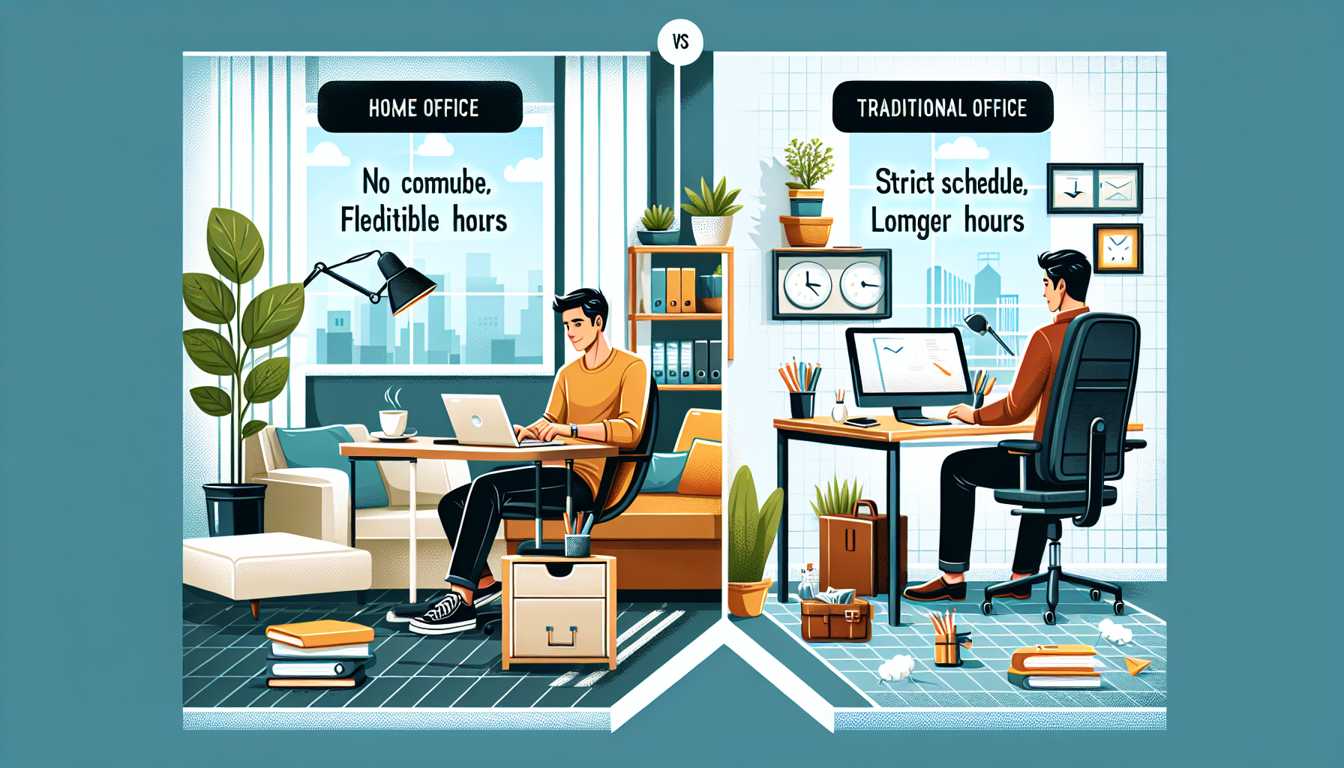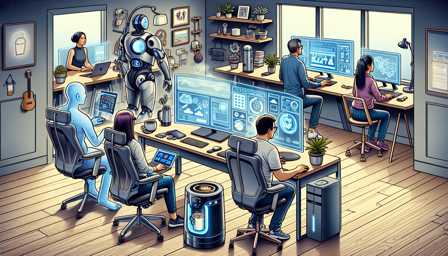
Home Office vs. Traditional Office: Pros and Cons
The nature of the workplace has undeniably changed over the past few years. With the advent of high speed internet and advancements in communication technologies, the age-old tradition of commuting to a traditional office space is rapidly being replaced by home office scenarios. Factors like the global pandemic have also fast-tracked this transition. However, like any other concept, home offices and traditional offices both have their strengths and weaknesses. Let's take an in-depth look at their pros and cons.
Traditional Offices: Pros
In a traditional office setting, the presence of a formal workspace generally improves focus and productivity. Physical separation between work and personal life can significantly reduce distractions. Performing tasks in an environment where everyone else is working can be a motivational boost.
Corporate offices also provide more opportunities for direct collaboration and spontaneity. You can catch up with colleagues in the hallway, quickly ask a question across the workspace, or engage in creative team brainstorming on a whiteboard. Products like Quartet Glass Whiteboard can magnify the brainstorming sessions allowing clear visual representation of concepts and ideas.
Networking is crucial in any industry, and traditional offices offer plenty of opportunities to strengthen relationships and make valuable connections.
Lastly, amenities like office supplies, state-of-the-art equipment, or office cleaning services often available in traditional offices take care of many little chores for you.
Traditional Offices: Cons
The daily commute is perhaps the most prominent disadvantage of traditional office settings. It can be time-consuming, costly, and stressful. Not to mention the impact that travelling to work has on the environment due to emissions from vehicles.
Restricted flexibility is another downside. Employees generally adhere to the nine-to-five schedule in traditional workplaces, which may reduce work-life balance and restrict personal obligations and activities.
Lastly, traditional offices may produce higher costs for employers. This includes rent, utility bills, furnishing, and maintaining buildings.
Home Offices: Pros
Working from home offers an unbeatable level of flexibility. Employees can choose their start and end times, reducing stress and increasing work-life balance. They can also dress more comfortably, and they typically have more options for personalizing their workspace. For instance, using an elevating desk such as the Fully Jarvis Standing Desk, workers can alternate between standing and sitting, potentially improving their health and comfort.
Eliminating daily commuting can lead to substantial savings in terms of time, cost, and even reduces environmental footprints.
From an employer’s perspective, having a remote workforce can reduce the costs associated with maintaining office space, such as rent, utilities, and supplies. Companies may also have access to a more diverse, global talent pool.
Home Offices: Cons
While remote work is flexible, it can blur boundaries between work and personal life. This often leads to overworking, as employees find it difficult to 'switch off.'
A home office may also lead to feelings of isolation, as the social opportunities provided by traditional office environments are much rarer. This could negatively affect collaboration and team cohesion.
Expanded reliance on technology can be a downside too. All work, meetings, and collaboration need to happen online and require a fast and reliable internet connection. Equipping a home office with adequate technology may involve significant initial costs.
Productivity could also be affected due to possible home distractions such as children, pets, or house chores.
Conclusion
In conclusion, both home offices and traditional offices have their unique advantages and challenges. The choice between the two often depends on individual needs and the nature of the job. However, many companies are now embracing a hybrid model - combining the best of both worlds, providing their employees with work environment options, and restructuring the work landscape.



